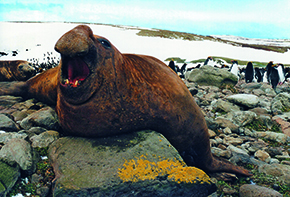
B.navez/wikimedia commonsSea elephant: also a victim of pesticidesB.navez/wikimedia commons
The use of pesticides in the course of the last century was important to increase the world’s agricultural output and make it big enough to feed the world’s population. The problem is that the effects of these compounds is not restricted to plantations on which they were applied – very often, the pesticides affect places that lie far away from the plantations and remain there for a long time. In the last few years, the team headed by oceanographer Adalto Bianchini, from the Federal University of Rio Grande, detected the existence of pesticides where they had never been applied before: namely, in Antarctica. When analyzing the blubber of elephant seals (Mirounga leonina) from Elephant Island on the Antarctica peninsula, close to the southernmost tip of South America, Bianchini and Kleber Miranda Filho found high levels of different pesticide compounds – such as DDT, the use of which has been banned in most countries – in the bodies of adult females and in their young. The content of these chemical products was higher in the mothers, who weigh nearly a ton and are three meters long, than in the cubs. The chemical products are transmitted through the mothers’ milk to the cubs, according to a paper to be published in Chemosphere. The toxic effect of these compounds, suspected of being one of the causes of the drop in the elephant seal population, is more serious in the early years of these animals’ life.
Republish